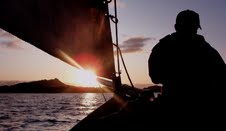
An Autoethnographic Exploration of Norway: Nature and Culture
Douglas Forell Hulmes, Prescott College: dhulmes@prescott.edu
Abstract: What began more than thirty years ago as a personal journey to explore my Scandinavian roots has evolved to a deep understanding of my mythopoetic connections with nature that has transformed my teaching. Through the process of exploring, learning, teaching and living in Norway, I have developed a field course for upper division students at Prescott College. From learning to sail traditional wooden boats to assisting with a harvest at a thousand year old farm, students discover the meaning of sustainability thr
ough direct experience, and how people have survived in a landscape that has directly influenced the Scandinavian cultural movements of Deep Ecology, and Friluftsliv or “Free Air Life”. The sharing of cultural wisdom handed down through generations of how to live sustainably with a landscape is rapidly disappearing and is key to our survival.
Keywords: autoethnography, friluftsliv, nature, culture, relationships, landscape, Norway, sustainability
How it Began: From Tomte Wisdom to Friluftsliv: Scandinavian Perspectives of Nature
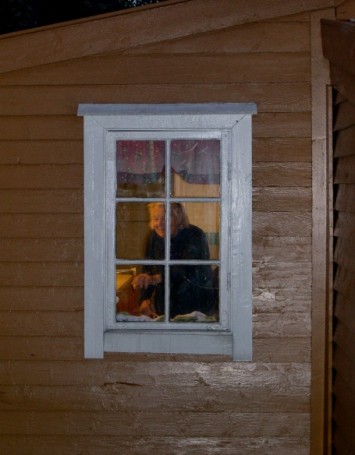 [2]My mother would carefully place the tomte on the shelves of our living room bookcase every December about a week before Christmas, along with miniature goats made of straw, and sheaves of grain that she said were for the birds who were in search of food during the snowy months of winter. The tomte were the little people or elves of my Swedish ancestors’ culture, and they brought a sense of humor and delight to the darkening days of winter as well as a reminder of how we must treat each other and nature with respect. If we didn’t care for nature’s creatures, the tomte might play nasty tricks on us (Hulmes, 2007).
[2]My mother would carefully place the tomte on the shelves of our living room bookcase every December about a week before Christmas, along with miniature goats made of straw, and sheaves of grain that she said were for the birds who were in search of food during the snowy months of winter. The tomte were the little people or elves of my Swedish ancestors’ culture, and they brought a sense of humor and delight to the darkening days of winter as well as a reminder of how we must treat each other and nature with respect. If we didn’t care for nature’s creatures, the tomte might play nasty tricks on us (Hulmes, 2007).
Introduction
From these early childhood memories of my Scandinavian heritage, I developed an interest for learning more about the folklore and mythology of the Nordic people and their relationship to nature. As an environmental educator, I have come to appreciate the values of stories to teach lessons and draw analogies. This form of cultural wisdom, shared through stories, fables, and myths, forms the basis of awareness toward the good as well as the bad or dangerous aspects of nature. C.A. Bowers (1997), in his book, Culture of Denial, refers to our “mythopoetic” connections to nature; the sources of wisdom that form a sense of moral and ethical relationship to the natural world as well as our relationships to one another (p. 4).1 The homogenizing process of modern American culture is rapidly losing much of this wisdom.
For a variety of reasons, many of our grandparents and great grandparents who came to this country as immigrants felt an obligation to refrain from speaking their mother tongues, and were also led to believe that folk beliefs and traditions had no relevance in their newly adopted homeland. Others left their homelands due to unfortunate circumstances and rejected these traditions as reminders of a dark past. Probably an even greater factor was the influence of religion and science that relegated these beliefs and traditions to the level of antiquated fairy tales. They were also found to be somehow contrary to the teachings of Christianity and the objectification of nature through science.
My initial introduction to the Swedish tomte eventually fueled a lifelong fascination with my Scandinavian heritage, including the history, mythology, folklore, and traditions that I felt was entirely missing from my formal education. The journey I have taken in recovering my cultural heritage eventually led me to a Norwegian word, friluftsliv, a concept that bridges the mythopoetic folklore of Scandinavia with a way of being with nature that invokes a sense of wonder, respect, and joy in being present and at home in nature. The direct translation of friluftsliv is “free air life.” My perspectives of friluftsliv are still developing, and my hope is that this essay will trigger an understanding and desire to explore its application to the American relationship to, and use of, nature.
Purpose
“In ethnographic research, you participate, to some degree, in the lives of the people you are studying. You do this to try to see the world from their cultural perspective” (Shank, 2002, p. 56). Autoethnography as a form of ethnographic research includes the personal experiences of the researcher as they explore contextual cultural phenomena. According to Wikipedia (2013), “it is a form of self-reflection and writing that explores the researcher’s personal experience and connects this autobiographical story to wider culture, political, and social meanings and understandings.” Subjectivity is at the heart of autoethnographic practice.
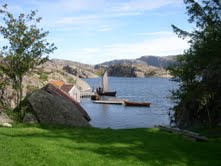 [3]The purpose of this study is to consider how landscape influences culture and how culture as a result of its unique history influences landscapes through an interdisciplinary and experiential process of exploration. Students consider relationships between subjects that are often taught in isolation such as ecology, geology, history, mythology, folklore and environmental issues. With this foundation, students can better understand the evolution of environmental consciousness in Norwegian culture as expressed in Norwegian literature, Deep Ecology, and the landscape itself. Uniquely, in this study, the process involves a personal, shared, and guided exploration of the concept and field of Friluftsliv (free air life). My personal explorations of my Scandinavian roots, Friluftsliv, as well as the academic content are interwoven in an experiential process of guiding my students through this exploration (see syllabus in appendix). As this is a lifelong journey for me, this paper provides only a snapshot in time in an ongoing study.
[3]The purpose of this study is to consider how landscape influences culture and how culture as a result of its unique history influences landscapes through an interdisciplinary and experiential process of exploration. Students consider relationships between subjects that are often taught in isolation such as ecology, geology, history, mythology, folklore and environmental issues. With this foundation, students can better understand the evolution of environmental consciousness in Norwegian culture as expressed in Norwegian literature, Deep Ecology, and the landscape itself. Uniquely, in this study, the process involves a personal, shared, and guided exploration of the concept and field of Friluftsliv (free air life). My personal explorations of my Scandinavian roots, Friluftsliv, as well as the academic content are interwoven in an experiential process of guiding my students through this exploration (see syllabus in appendix). As this is a lifelong journey for me, this paper provides only a snapshot in time in an ongoing study.
Methods
An “autoethnography” is a reflexive account of one’s own experiences situated in culture. This study includes my personal perspectives along with my students as we explore the Norwegian landscape and culture together. Methods include observations and reflection reported in a “first person” perspective. This study is characterized by the autoethnographic practices of “thick description” of personal and interpersonal experiences and “epiphany moments” drawn from field notes, journals, and other artifacts. Reliability, validity, and generalizability – cornerstones for the evaluation of social science research become author credibility, verisimilitude (Ellis, Adams, & Bochner, 2011), and the extent to which readers can identify with the phenomena under study.
Narrative Description: Bringing Experience and Perspectives to Teaching a Place-based Interdisciplinary Field Course.
Explorations of Norway Nature and Culture, is a course I co-created with friends and colleagues in Norway after my initial opportunity to work with a Friluftsliv program at Olavskulen Folkehøgskule in 1991. Gaining insights and being mindful of cultural perspective I hold as an American, as well as Norwegian perspectives of the American culture has been a significant area of consideration in the design and implementation of the class. Cultural sensitivity and an attempt to become somewhat proficient in Norwegian have been critical in developing contacts and perspectives integral to the course. In America, people who claim fluency in another language are truly remarkable. I have been amazed by the multiple languages that most Norwegians are capable of speaking, as compared with most Americans. The Norwegian language is actually comprised of two languages, Bokmål, the formally taught language influenced by several hundred years of Danish rule, and Nynorsk, a mid nineteenth century effort to consolidate the myriad of dialects that have formed in part due to the rugged mountains, deep fjords and isolated islands.
My limited vocabulary in Swedish (spoken in my childhood home) aided my attempts to learn more Swedish, which is generally understood by most Norwegians. As a result, I have developed a hybrid dialect of Swedish and Norwegian that has been extremely beneficial in accessing non-English reading material and engaging with people from isolated places who could not speak English. The effort to learn the language of a culture and place is essential and at the very least respectful.
This course could not be taught without the incredible network of friends that I have established during my time living and working in Norway. I am the choreographer for most of the course; my friends, who are truly outstanding in their fields of expertise, are the real stars. They have opened their hearts, minds and homes to me and to my students. I have also made it a goal to visit people and places beyond the typical route that tourists follow. As a result, I have found it necessary to keep the size of my class at or below ten students for both logistical and cultural reasons.
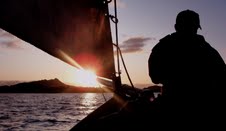 [4]When I first visited Scandinavia, I felt a deep resonance with the landscape, as if the DNA within my body was reconnecting with its origins. Connecting with my ancestral homeland has been an obvious passion of mine that manifests in my teaching. At first I felt almost protective of sharing my Norwegian connections with my college students, almost as if I was bringing them to my relatives’ homes. I have come to realize that the experience of teaching this class has been mutually beneficial, and has reinforced my commitment to interdisciplinary multicultural education.
[4]When I first visited Scandinavia, I felt a deep resonance with the landscape, as if the DNA within my body was reconnecting with its origins. Connecting with my ancestral homeland has been an obvious passion of mine that manifests in my teaching. At first I felt almost protective of sharing my Norwegian connections with my college students, almost as if I was bringing them to my relatives’ homes. I have come to realize that the experience of teaching this class has been mutually beneficial, and has reinforced my commitment to interdisciplinary multicultural education.
Explorations of Norway: Nature and Culture: The Class Begins
The history of a cultural landscape is often the history of a dynamic relationship of reciprocal influence between the cultural, with its human conventions, practices and activities, on the one hand, and the natural, the land and its conditions, on the other (Arntzen, S. & Brady, E., 2008, p. 44).
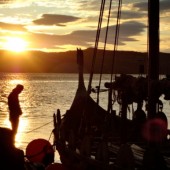 [5]How does landscape influence culture, and how does culture as a result of its history, including mythopoetic stories, traditions and folklore, influence the contemporary culture and its attitudes towards Nature? During the five week class, ten Prescott College students and two instructors, embark on their investigation at the historical port city of Bergen, Norway, where students receive an overview of the theoretical and experiential components of the course, and begin considering the history of Norway’s second largest city.
[5]How does landscape influence culture, and how does culture as a result of its history, including mythopoetic stories, traditions and folklore, influence the contemporary culture and its attitudes towards Nature? During the five week class, ten Prescott College students and two instructors, embark on their investigation at the historical port city of Bergen, Norway, where students receive an overview of the theoretical and experiential components of the course, and begin considering the history of Norway’s second largest city.
From Bergen we travel to a small island near the mouth of Sognefjord, where Roar Moe lives and teaches Coastal Friluftsliv. Roar is a quiet, self-reliant man who incorporates direct experience into his teaching style. He studied under Nils Faarlund, one of Norway’s foremost Frilurtsliv vegleder (leaders of the way). Roar is committed to a simple life style based on the deep cultural traditions of the Norwegian west coast fishers and farmers. His work with young people demonstrates, through example, the philosophical values of Deep Ecology,2 and the need for cultural wisdom to be retained in a modern world that cannot continue at the present level of consumption.
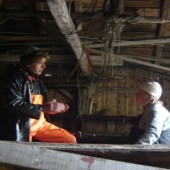 [6]My students recognized the incredible value of experience and through discussions with Roar, and have gained perspectives of the depth and commitment of his philosophy and chosen life style. Several of my students have been profoundly impacted by their experiences on Litle Faerøy and are continuing to reflect on ways to simplify their own lives and incorporate some of their understanding of Friluftsliv into their personal and professional lives.
[6]My students recognized the incredible value of experience and through discussions with Roar, and have gained perspectives of the depth and commitment of his philosophy and chosen life style. Several of my students have been profoundly impacted by their experiences on Litle Faerøy and are continuing to reflect on ways to simplify their own lives and incorporate some of their understanding of Friluftsliv into their personal and professional lives.
We learn to sail square sailed wooden boats, fish with nets and gain perspectives of how people for centuries adapted to the extreme conditions along the rugged stormy coast of the Norwegian Sea. From the tiny island of Litle Faerøy, we travel across the Sogne Sea on a restored trawler, captained by a man with a truly amazing neck beard. Steiner, an expert on the research of the legendary Kensington Stone and Viking navigational history, is a treasure chest of information.
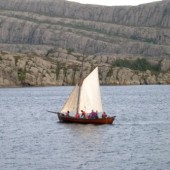 [7]By ferry, we continue to the head of Sognefjord and assist in a harvest on a one thousand year old farm that now practices organic/biodynamic agriculture and is managed by students at one of Norway’s oldest two-year agricultural schools, Sogn og Jord Hagebruksskolen. This school also provides assistance with elementary school thematic gardens. The curriculum includes instruction from local farmers who have been asked to teach the most important lessons specific to their farm’s micro-environment that they have learned from generations of wisdom handed down to the present.
[7]By ferry, we continue to the head of Sognefjord and assist in a harvest on a one thousand year old farm that now practices organic/biodynamic agriculture and is managed by students at one of Norway’s oldest two-year agricultural schools, Sogn og Jord Hagebruksskolen. This school also provides assistance with elementary school thematic gardens. The curriculum includes instruction from local farmers who have been asked to teach the most important lessons specific to their farm’s micro-environment that they have learned from generations of wisdom handed down to the present.
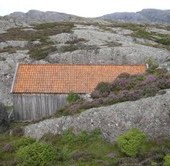 [8]It is important to note that ecologists in Norway and Europe consider cultural landscape to have critical ecological values. A cultural landscape can be defined as a human initiated modification of nature rooted within a culture that has co-evolved with a landscape. Specific types of landscapes have been created by farming techniques that employ traditional methods that have sustainability components, proven over the course of sometimes hundreds of years. According to Arntzen & Brady (2008, p. 44), “Farming practices can create conditions that favor the coexistence of plants that will not coexist in the wild. Here, cultural landscapes possess biological diversity and richness that make them ecosystems in their own right and as such, from the perspective of botanists and ecologists, worthy of preservation.”
[8]It is important to note that ecologists in Norway and Europe consider cultural landscape to have critical ecological values. A cultural landscape can be defined as a human initiated modification of nature rooted within a culture that has co-evolved with a landscape. Specific types of landscapes have been created by farming techniques that employ traditional methods that have sustainability components, proven over the course of sometimes hundreds of years. According to Arntzen & Brady (2008, p. 44), “Farming practices can create conditions that favor the coexistence of plants that will not coexist in the wild. Here, cultural landscapes possess biological diversity and richness that make them ecosystems in their own right and as such, from the perspective of botanists and ecologists, worthy of preservation.”
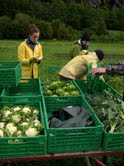 [9]Along the way we visit two Norwegian folk high schools (Folkehøgskule), Sogn Folkehøgskule and Bømlo Folkehøgskule. Scandinavian Folk High Schools provide young people a year to explore areas of interest before having to make critical life decisions. We have the opportunity to meet young people and teachers while considering mutual areas of interest related to our class. For instance, during one Folk High School visit in September 2011, we engaged in discussions with Norwegians about their perspectives related to Anders Behring Breivik’s terrible massacre of 69 members of the Norwegian Labor Party while they attended a youth conference on the island of Utøya near Oslo. Over ten thousand Norwegians attended this event. Laura Hitt, a Prescott College student in my class, wrote an eloquent essay related to conversations about the Breivik massacre.
[9]Along the way we visit two Norwegian folk high schools (Folkehøgskule), Sogn Folkehøgskule and Bømlo Folkehøgskule. Scandinavian Folk High Schools provide young people a year to explore areas of interest before having to make critical life decisions. We have the opportunity to meet young people and teachers while considering mutual areas of interest related to our class. For instance, during one Folk High School visit in September 2011, we engaged in discussions with Norwegians about their perspectives related to Anders Behring Breivik’s terrible massacre of 69 members of the Norwegian Labor Party while they attended a youth conference on the island of Utøya near Oslo. Over ten thousand Norwegians attended this event. Laura Hitt, a Prescott College student in my class, wrote an eloquent essay related to conversations about the Breivik massacre. 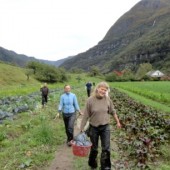 [10]In “Land of the Vikings,” she describes her experience at Sogn Jord og Hagebruksskulen while harvesting beets with Veronica an immigrant who first came to Norway as a refugee from the war in Croatia, and was asked by another student if she was from Aurland, the small town where the agricultural farm is located. The following excerpt from Laura’s essay captures a poignant interaction related to the Breivik massacre.
[10]In “Land of the Vikings,” she describes her experience at Sogn Jord og Hagebruksskulen while harvesting beets with Veronica an immigrant who first came to Norway as a refugee from the war in Croatia, and was asked by another student if she was from Aurland, the small town where the agricultural farm is located. The following excerpt from Laura’s essay captures a poignant interaction related to the Breivik massacre.
I half-squatted, half-sat across the row from Veronica and plucked the beets from their hibernation. I thought about Breivik. He had lived on an “organic farm.” Using the title as a front he ordered six tons of fertilizer and used it to build a car bomb in his garage.
[Veronica] was short and green-eyed, with olive skin and curly hair that refused to stay tied at the base of her neck; she did not look like she had Viking (“Wiking” as the “v”-challenged Norwegians pronounced it) blood. And although her reply was humorous, a hint of sharpness made me wonder what it was like for her to live in this northern land, surrounded by towering Norwegian woman, all white-blond manes and svelte bodies. I certainly felt insecure amidst these archetypal females. After all, this was the part of the world where the supermodel cookie cutter was invented.
I asked Veronica what she thought about the attack. She kept pulling beets as she talked, feeling expertly for the ones that were big enough to pick. “There are people in Norway who agree with Breivik, who hate immigrants,” she said. “And there are people like that in America too,” I said ruefully. Of course these kinds of people are everywhere but [Norwegians] thought [they were] different.” “Do you feel unsafe here now?” I blurted out.
She didn’t seem surprised by the question, “After it happened people came into the streets to support each other. People were hugging and crying together. It was like everyone decided to respond with love instead of hate.” Like after 9/11, I thought, except that after the initial outpouring of support and acceptance, we (or our government at least) had channeled our anger into violent retaliation.
I remembered a quote I had read in the news. One woman, a victim who survived the Utøya shooting, spoke the phrase that Norway rallied behind. “If one man can show so much hate, think how much love we could show together.” Norway, at least was trying. (Hitt, L., 2011)
At Bømlo Folkehøgskule, another student who was a refugee from Shri Lanka, and lost several friends in the massacre, decided to run for political office from her district. At eighteen, she won a decisive victory that reflected both the power of youth and also a strong backlash of voters towards racial intolerance. This issue compares starkly with the terrorist attack in the United States, which resulted in our military presence in Afghanistan. Larger issues that underlie the topic of sustainability and social justice are the increasing threat of terrorism and refugees throughout the world triggered by competition over dwindling fossil fuels, depletion of natural resources and climatic change that is in part being influenced by a standard of living of first world countries that far exceeds the ecological carrying capacity of the earth.
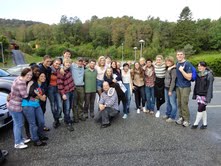 [11]I first met Magne Flokness, Headmaster for the Bømlo Folkehøgskule, and previously Olavskulen Folkehøgskule when we sailed a wooden boat from Bergen to Bømlo right after 9/11. Not knowing if or when we would be able to fly back to America, I became overwhelmed with emotions when Magne greeted us at the dock and said we were welcome to stay as long as we needed a place to stay. Thanks to Magne, and my close friends Øystein Barane and Brynjar Stautland, who assist with logistics, sailing, and lectures and discussions on the significant Viking and pre-Viking history of this island, Bømlo will always feel like a second home for me, and has also provided my students the opportunity to meet and interact with students who attend the folkehøgskule.
[11]I first met Magne Flokness, Headmaster for the Bømlo Folkehøgskule, and previously Olavskulen Folkehøgskule when we sailed a wooden boat from Bergen to Bømlo right after 9/11. Not knowing if or when we would be able to fly back to America, I became overwhelmed with emotions when Magne greeted us at the dock and said we were welcome to stay as long as we needed a place to stay. Thanks to Magne, and my close friends Øystein Barane and Brynjar Stautland, who assist with logistics, sailing, and lectures and discussions on the significant Viking and pre-Viking history of this island, Bømlo will always feel like a second home for me, and has also provided my students the opportunity to meet and interact with students who attend the folkehøgskule.
We then travel by bus across the highlands of southern Norway called the Hardangervidda to the village of Bø, and Telemark University, where I was a guest professor in 1996 – 97 and taught in Norway’s first international environmental studies program that focused on Norwegian Nature and Culture. While at Telemark, my students have the opportunity to meet students and faculty while consolidating their understanding of the related fields of Friluftsliv, Deep Ecology and Environmental Philosophy. They gain a variety of perspectives through experience, dialogue, lectures, and readings.
The following journal reflection by Eric Mitchell-Healey, encapsulates student learning and conveys significant learning outcomes:
[12]When I first saw Per Ingvar walking down the hill towards our tent, it was as if I could feel the stillness of his spirit radiating more vibrantly the closer he came. I could sense his wisdom before we shook hands. As we walked towards a wooded hiking location to meet, Doug, Per, and I casually talked. Per mentioned that one of the last things he did with Arnae Ness, before his passing, was write a book about the Norwegian perspectives of Deep Ecology.
I asked Per a practical question I had been pondering every since I read Wisdom of the Open Air. “If people need to experience joy in nature to instill personal love and value for it, but the natural landscapes are diminishing worldwide, and the more we encourage people to recreate in nature the greater the impact on these areas becomes, how can we teach eco-centric philosophies while preserving the beauty and diversity of natural areas? His answer was fairly simple…. Children. It is most important to prevent anthropocentrism by giving children joy in nature, and establishing ecocentric values at a young age. I was slightly disappointed by the simplicity of his answer, but there was great truth to it, the experiences we have as kids creates the frame-work for the mental map we continually add to with each passing moment of life…
Throughout the course we continued to meet people who are the few “leaders of the old” still practicing and teaching the ways of a traditional Norwegian lifestyle. My experiences with Roar, Gudrun, Rich, Jill, Paul, Holstein, Magne, Ivar, Nat, Joren, Per Ingvar, Tone and Nala were a glorious beacon of hope. Knowing that there are still countless people trying their best to preserve environmental ethics and cultural traditions was inspiring. (Mitchell-Haley, E., 2011)
Conclusion
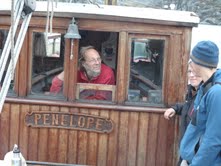 [13]I believe it is important to bring my work in Scandinavia to the attention of those I consider leaders in the field of Sustainability Education and especially readers who may be inspired by the incredible people I work with in Norway and the exciting work they are doing to educate future generations and share the wisdom of their ancestors. Within most cultures there seems to be individuals who stand out as “leaders of the way,” they may not have Ph.D.’s, or be elected officials, they may be farmers, ranchers, gardeners, teachers, story tellers and neighbors, but they all seem to share in a commitment to caring, being close to nature and living simply, and are willing to share the wisdom and stories that connect us with our past and give us perspectives for caring for and sustaining the places where we live. And as the Norse mythologies tell us, despite all of our efforts, chaos will always be a part of nature. It is up to us to treat each other with respect, to live with integrity, and to honor the wisdom of our elders and if possible learn from their mistakes.
[13]I believe it is important to bring my work in Scandinavia to the attention of those I consider leaders in the field of Sustainability Education and especially readers who may be inspired by the incredible people I work with in Norway and the exciting work they are doing to educate future generations and share the wisdom of their ancestors. Within most cultures there seems to be individuals who stand out as “leaders of the way,” they may not have Ph.D.’s, or be elected officials, they may be farmers, ranchers, gardeners, teachers, story tellers and neighbors, but they all seem to share in a commitment to caring, being close to nature and living simply, and are willing to share the wisdom and stories that connect us with our past and give us perspectives for caring for and sustaining the places where we live. And as the Norse mythologies tell us, despite all of our efforts, chaos will always be a part of nature. It is up to us to treat each other with respect, to live with integrity, and to honor the wisdom of our elders and if possible learn from their mistakes.
If we are to survive and create a future for our descendants, I feel we must seek the wisdom of all that we have speculated on throughout history including mythology, religion, philosophy and science. Each holds a key that together unlock the door to our future…one key will not open the door to a sustainable future for human kind.
Perhaps we have forgotten the ancient wisdom of mythology that guided people’s lives in the dawn of civilization. Perhaps the wisdom of the Norse Sagas has a relevant message for us today by reminding us of the world tree, Yggdrasil. By revisiting this saga, perhaps we can be reminded that the tree of life is dying, and unless we take serious measures to care for the tree, the world as we know it may end. Perhaps there is still hope and we can begin by planting and caring for a Tuntre (court yard tree or spiritual link to the tree of life and wisdom, Yggdrasil) as a symbol of our connection to and responsibility for life and the Earth. Perhaps Midgards Ormen (the World Serpent), symbolizes today our linear specialist thinking and arrogance that unleashes the wonders of technology (Fenrir, the giant wolf created by Loki), represented by such endeavors and advances brought about by the oil and chemical industries, nuclear power, genetic engineering and ever increasing abilities to systematically exploit the oceans and terrestrial environments without the control of ethics. While perceived as great advances, perhaps there is an underlying threat that is killing the tree of life and wisdom, the guardian tree….Yggdrasil.
Bringing it home:
Sitting around a simple wooden table in a room lit with candles, the wind howling off the North Sea and buffeting the island of Litle Faerøy, four kindred spirits, one Norwegian, one Brit, and two Americans, talked softly into the night, sipping Scottish whiskey. Our discussion drifted to the idea of friluftsliv and the value of living the simple life. Roar Moe’s commitment runs deep in his Norwegian blood. He has been living in this cottage on Litle Faerøy; living the simple life of coastal friluftsliv for more than 20 years, and while tested by nature and loneliness, one can tell from the depths of his blue eyes that he has found his way home.
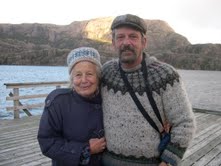 [14]As my life unfolds, I reflect on my family, and friends who have become my family, and my need to feel at home in the place where I live. I have come to realize that home includes nature, with friends who share a vision of life that brings a return to simplicity and closeness to nature, the sharing of stories, the feeling of belonging and the knowing that we are part of a continuing cycle that is profound, beautiful, and at the same time frightening and perplexing. We do not and cannot travel this journey alone, and finding kindred spirits who share a common understanding of the need for friluftsliv has been a remarkable gift that began with my mother placing the tomte on the book shelves of my home so many years ago.
[14]As my life unfolds, I reflect on my family, and friends who have become my family, and my need to feel at home in the place where I live. I have come to realize that home includes nature, with friends who share a vision of life that brings a return to simplicity and closeness to nature, the sharing of stories, the feeling of belonging and the knowing that we are part of a continuing cycle that is profound, beautiful, and at the same time frightening and perplexing. We do not and cannot travel this journey alone, and finding kindred spirits who share a common understanding of the need for friluftsliv has been a remarkable gift that began with my mother placing the tomte on the book shelves of my home so many years ago.
References
Arntzen, S. & Brady, E., (Eds.). (2008). Humans in the land: The ethics and aesthetics of the cultural landscape. Portland, OR: Akademika Publishing.
Boss, Claire, (Ed.), (1984). Scandinavian folk & fairy tales. New York, NY: Avenel Books.
Bowers, C.A. (1997). The culture of denial. Albany, NY: State University of New York Press.
Ellis, C., Adams, T.E., & Bochner, A.P. (2011). Autoethnography: An overview. Forum: Qualitative Social Research,12(1). Retrieved 1.09.13 from http://www.qualitative-research.net/index.php/fqs/article/view/1589/3095 [15]
Hitt, L. (2011). Land of the Vikings. Student portfolio reflections. [Journal Entry, Prescott College]. Copy in possession of author.
Hulmes, D. (2007). From tomte wisdom to friluftsliv: Scandinavian perspectives of nature. In Henderson & Vikander (Editors), Nature first: Outdoor life the friluftslive way (pp. 221 – 234). Toronto, Canada: Natural Heritage Books.
Mitchell-Haley, E. (2011). Student portfolio reflections. [Journal Entry, Prescott College]. Copy in possession of author.
Shank, G. D. (2002). Qualitative research: A personal skills approach. Upper Saddle River, NJ: Pearson Education, Inc.
Wikipedia (2013, January 09). Wikipedia, the free encylopedia. Retrieved from http://en.wikipedia.org/wiki/Autoethnography [16]
Footnotes
[1]C. A. Bowers has written several books that challenge the cultural assumptions of the American economic and educational system with respect to our anthropocentric views of nature. He also argues for the importance of retaining the intergenerational wisdom handed down through stories and traditions that he refers to as our “mythopoetic narratives”.
2 Deep Ecology: The understanding that we must make decisions from an ecocentric vs. anthropocentric perspective.
Appendix: Course Description & Syllabus
Explorations in Norway:
Nature and Culture
Instructors: Douglas Hulmes, Mike Gaige
Course Description
Beginning with the retreat of the continental ice cap ten thousand years ago, Northern Europe has experienced an ecological evolution that has created a dramatic and beautiful landscape. Human occupation coincided with the retreat of ice, resulting in the development of cultures closely linked to the rugged mountainous landscape and the wild and treacherous northern seas. The Viking tribes were products of their environment, and these strong, courageous peoples ruled Northern Europe and explored and settled distant lands that ranged from deep within Russia to the New World 500 years before Columbus.
This four week class will explore the fjords and western coastline of Norway; a land that bore a significant element of the Viking culture. Through experiencing and studying the land and sea, students will gain an appreciation for a landscape and cultural geography that essentially have evolved together. From this vantage point we will consider the historical and contemporary Norwegian culture, their environmental challenges, and the environmental philosophers who argue eloquently for their future.
Purpose
This class is intended as an interdisciplinary course involving Environmental and Integrative Studies. It provides students with an outstanding experiential opportunity to study the natural and cultural history of Norway as well as the contemporary Norwegian culture, and their environmental issues. Prescott College has offered several classes in Norway over the past twenty years. The opportunity to explore historical, cultural and ecological perspectives has added significantly to the international perspectives of the College’s mission statement, and has also helped to strengthen academic classes taught in Prescott by giving the instructors additional insight into their areas of academic interest and expertise.
Objectives
Upon completion of this class students will:
- have a basic understanding of the geological and ecological processes that have formed the Norwegian coastal landscape.
- be able to identify the common plants and animals of the coast and mountains of Western Norway.
- become familiar with the history of the people who have inhabited Norway during the past 10,000 years, specifically focusing on Scandinavian Mythology, history and folklore.
- be introduced to traditional lifestyles and modes of transportation.
- gain an appreciation for the contemporary culture and the environmental challenges that are now occurring.
- become familiar with the perspectives of Norwegian Friluftsliv and environmental philosophers.
- With this background, students will be able to consider how landscape influences culture, and how culture as a result of its history influences the cultural landscape and contemporary environmental issues.
Texts
Reed, P. & Rothenberg, D. (Ed.) (1993). Wisdom in the open air: The Norwegian roots of deep ecology, Minneapolis, MN: University of Minnesota Press.
Henderson, B. & Vikander, N. (2007). Nature first: Outdoor life the friluftsliv way. Toronto, Canada: Natural Heritage/Natural History Inc.
Stenersen, O. (2003). The history of Norway: From ice age to today. Lysaker, Norway : Dinamo Forlag.
Study /Discussion Questions
- Describe the major ecological communities we encounter during the course, and include both the English and Norwegian names for the characteristic plants and animals (when possible).
- Explain how geographic and climatic factors influenced the history of West Coast Norwegian culture giving specific examples from the assigned readings and field experiences.
- Describe similarities and differences you have experienced with the Norwegian landscape and culture with another culture and bioregion that you have experienced; e.g. how have animals and people influenced specific vegetation associations, and in essence have created a cultural landscape?
- Select a mythological story, fairy tale or folk tradition and describe its mythopoetic relationship to nature or culture.
- Select one contemporary environmental issue and explore its relationship to the history and culture of the Norwegian people.
- Should cultural landscapes be preserved — why or why not?
- Pick one of the Norwegian ecophilosophers and discuss their major contribution to the idea of Deep Ecology as it relates to Norwegian Culture.
a. Who?
b. When did they live?
c. What were their main philosophical perspectives?
- From your experience in Norway and the discussions we have had on the idea of Friluftsliv, how would you describe this idea compared with the U.S. traditions of Adventure Education and/or other outdoor pursuits?
- What patterns in the history of U. S. and Norway are similar, and what influences did these patterns have on the cultural landscapes of these two countries?
- Summarize your understanding of the field of Friluftsliv as it relates to Norwegian identity, and culture.
Ecological/Historical Riddles to contemplate
11. How did the fleas of Mongolia possibly influence the forests of Norway?
- How did the volcanic eruptions of Iceland cause the near extermination of beaver in Norway and the Rocky Mountains of the U.S.
Academics
This highly interdisciplinary course will hopefully be an intense and enjoyable learning experience that will involve firsthand experience with people, places, and ideas presented through lectures, discussions and presentations that will be complemented by assigned readings. Study questions have been designed to help you synthesize the information and the experiences.
Scope of class – Introduction
I. What is “Home”? What does it mean to have a “Sense of Place”?
- How do Americans define “Home”, and how does this compare with Norwegians?
- To understand Norwegian Nature and Culture, it is important to have an understanding of the geography, ecology, and human history of Norway as a means of better appreciating and comprehending the relationships between the people and the land with respect to Norway’s past, present, and future.
- ·
- Ecology and Geography of Norway
A. Geologic History of Norway
B. Glacial and Climatic Influences
C. Natural History
1. Biotic Communities
a. Marine
b. Coastal Heath
c. Forest: Deciduous and Evergreen
d. Meadow
e. Marsh
f. Fresh water: lakes, ponds, streams
g. Tundra
2. Animals
III. Cultural Perspectives
A. Human History
1. Stone Age: 8,000 years B.P.
2. The Northern Peoples to A.D. 700
a. From the beginnings to the Age of Migrations.
b. The legendary history of the Nordic people.
3. Viking Age: 780 – 1070
a. Scandinavian community diversity and unity.
b. The historical traditions of Norway to 950.
c. Denmark and Norway from the accession of Harald Bluetooth to the Death of Olaf Tryggvason (c.950 – 1000).
d. The Viking movement overseas.
4. Recent History to Present
IV. Norway and Scandinavia: Evolving attitudes towards the environment.
- How have attitudes towards the environment changed and developed?
B. How can these attitudes be traced throughout the Scandinavian culture as exemplified through:
1. Legends, sagas, Nordic mythology, superstitions, etc. (trolls, fairies, elves, nøkken, draugen, huldra, underjordiske, nissen, etc.)
2. Literature: What Nordic literature exemplifies attitudes towards nature?
3. Art: How have artists depicted nature, ie. artists of the Romantic period compared with artists in Europe and America?
4. Music
5. Religion: What positive and negative interpretations of Christianity have influenced attitudes towards nature (i.e. dominion vs. stewardship)? How does this compare to pre-Christian pagan beliefs?
6. Philosophy: Who are the Nordic philosophers that have written about the values of Nature? How do their philosophies compare with those in America?
Peter Wessel Zapffe
Arne Neass
Sigmund Kvaløy
Nils Faarlund
Finn Alnæs
Johan Galtung
Erik Dammann
C. What are the contemporary environmental issues in Norway and how are they being dealt with by the Norwegian culture?
1. Hydroelectric: Sami culture, waterfalls, fish, economics, Europe.
2. Oil in the North Sea: economics, pollution, and cultural impacts.
3. Fishing: economics, over fishing, aqua culture, Europe.
4. Bridges and automobiles vs. trains
5. Whaling: cultural tradition vs. world opinion, economics, attitudes towards Greenpeace, and Americans.
6. European Community: Norwegian attitudes, environmental concerns.
7. Outdoor Recreation (Friluftsliv): traditional vs. modern, Impacts of tourism.
8. Baltic Sea: Scandinavia and the Baltic countries; pollution, mustard gas from World War II, bridge connecting Denmark and Sweden.
V. Evolution of Attitudes towards Nature in Western Culture:
A. Biblical
B. Medieval Europe
C. America
Geography of Norway
Mountain ranges capped with Europe’s largest glaciers and ice caps, cover more than half of the land mass of Norway. Only 3% is arable. 1/3 of the country lies north of the Arctic Circle
I. Geology
Precambrian metamorphic rocks consisting of gneiss, schists, slates, and granites were a late addition to the Baltic Shield. They date to 1.8 billion years old.
The Lofoton and Vesterålen islands of the north are largely comprised of granites and gneiss that were once attached to the North American plate, and eastern Greenland. The islands were separated by the spreading of the mid-Atlantic Ridge, (Caledonian Mt. Range). Must also have been connected with the ancient rocks of the Hebrides.
North Sea contain two rift valleys that contain Jurassic shale bearing rich deposit so oil and gas that now make Norway the world’s second largest exporter of petroleum products.
Glacial periods of the past 1.8 billion years plateaus subsided 700 meters due to weight of the ice sheets that were 2000 meters thick.
4-5 Glacial episodes of the Quaternary period have occurred over the last 2 million years.
Valley glaciers gauged out the river courses, sculpted the mountains and created the vast number of fjords.
*Discuss morphology of glaciers and fjords
Most of the ice melted 8,800 years ago at the end of the last ice age….10 to 20 thousand years ago.
II. Climate
Typically rainy climate is mild considering its latitude due to the Gulf Stream. Coastal mountains trap moisture from the prevailing S. W. winds… Bergen receives 2250 mm of rain annually, while the driest districts east of the mountains receive less than 500 mm. annually.
Average temperatures for July are 16 degrees C in the south and 1 C in winter, (Jan).
Rainfall in Bergen averages 160 mm in August and 210 mm in September
Temperature average in August is 67 and 65 in September.
III. Natural History
A. Flora
1. Alpine: Alpine meadow, Heath, wet/dry, snowbed, fjellfield, talus, boulder, Krumholz, Raindeer/Lav. polygons, frost heaving, solifluction terraces.
2. Birch/willow/rognbear tree
3. Pine (Scotch), fir, spruce (sitka, introduced)
4. Pine/heather/einar/barlind/larch
5. Temperate deciduous forests: beech, elm, oak, hazelnut, maple, ash, choke cherry
6. Bog/marsh: myr, heath, moors, bog myrtle
7. Coastal heath/grassland
B. Fauna
1. Alpine: Lemmings (lemen), Ptarmigan (ripa), Reindeer (reindyr), Musk ox (muskus)
2. Forest
- Wolverine (jerv)
- Hedgehog (pinnsvin)
- House mouse (husmus)
- Beaver (bever)
- Voles (markmus)
- Badger (grevling)
- Bats (flaggermus)
- Otters (oter)
- Red deer (kronhjort)
- Weasels (vesel)
- Moose (elg)
- Martins (skamår)
- Wolves (ulv)
- Red squirrel (ekorn)
- Red fox (rødrev)
- Shrews (spissmus)
- Arctic fox (fjellrev)
- Rat (rotte)
- Lynx (guape)
- Brown bear (bjorn) Finnmark
- Polar Bear (isbjorn)
C. Marine Mammals
Seals (sel)
- Harbor Seals (steinkobbe)
- Grey Seals (havert)
- Ringed Seals (ringsel)
- Harp Seal (grønlandsel)
- Hooded Seal (Klappmyss)
- Bearded Seal (blåsel)
- Walrus (Hvalross) Svalbard
Whales (hval)
- Baleen
- Minke Whales (minkehval) Migrate between Azores & Svaldbard, actively hunted by Norwegians
- Sei Whale (seihval)
- Fin Whale (fin hval): Second largest whale in the world. Norwegians invented the exploding harpoon to hunt these whales.
- Blue Whales (blåhval) haven’t been seen in Nowegian waters since the 1960’s.
- Sperm Whales (spermsetthval)
- Humpbacked Whales (knolhval) N. of Ålesund
- Toothed Whales
- Killer Whales (spekkhogger)
- ·Pilot Whale (grindhval)
- Belugas (hvithval) Arctic, Barents Sea
- Narwhale (Narhval) Arctic, Barents Sea
- Dolphins (delfin) Bottle Nose, White-beaked, White sided, Common
D. Fish: Extensive varieties that provide an important part of Norway’s economy.
Salt Water
- Cod (torsk)
- Sprat (brisling)
- Haddock (kolje)
- Mackeral (makrell)
- Capelin (lodde)
- Sandeel (stersil)
- Ling (lange)
- Ocean Perch (uer)
- Pollock (sei)
Comments Disabled To "An Autoethnographic Exploration of Norway: Nature and Culture"
#1 Comment By Sarah Foglesong On August 16, 2013 @ 4:16 pm
You did a fantastic job describing this incredible course. My experiences with you during this course (2007) continue to affect how I look at my world, our culture, and the changes I would like to lead in them. Thank you!
#2 Comment By Doug Hulmes On August 17, 2013 @ 9:28 am
Wonderful to see you, and thanks for your comment on the article and the class. Zeke Smith is presently on the crew of the Harald Fairhair Dragon Viking ship, and three students from Telemark University will be attending Prescott College this year, while one student from Prescott will be attending Telemark University.